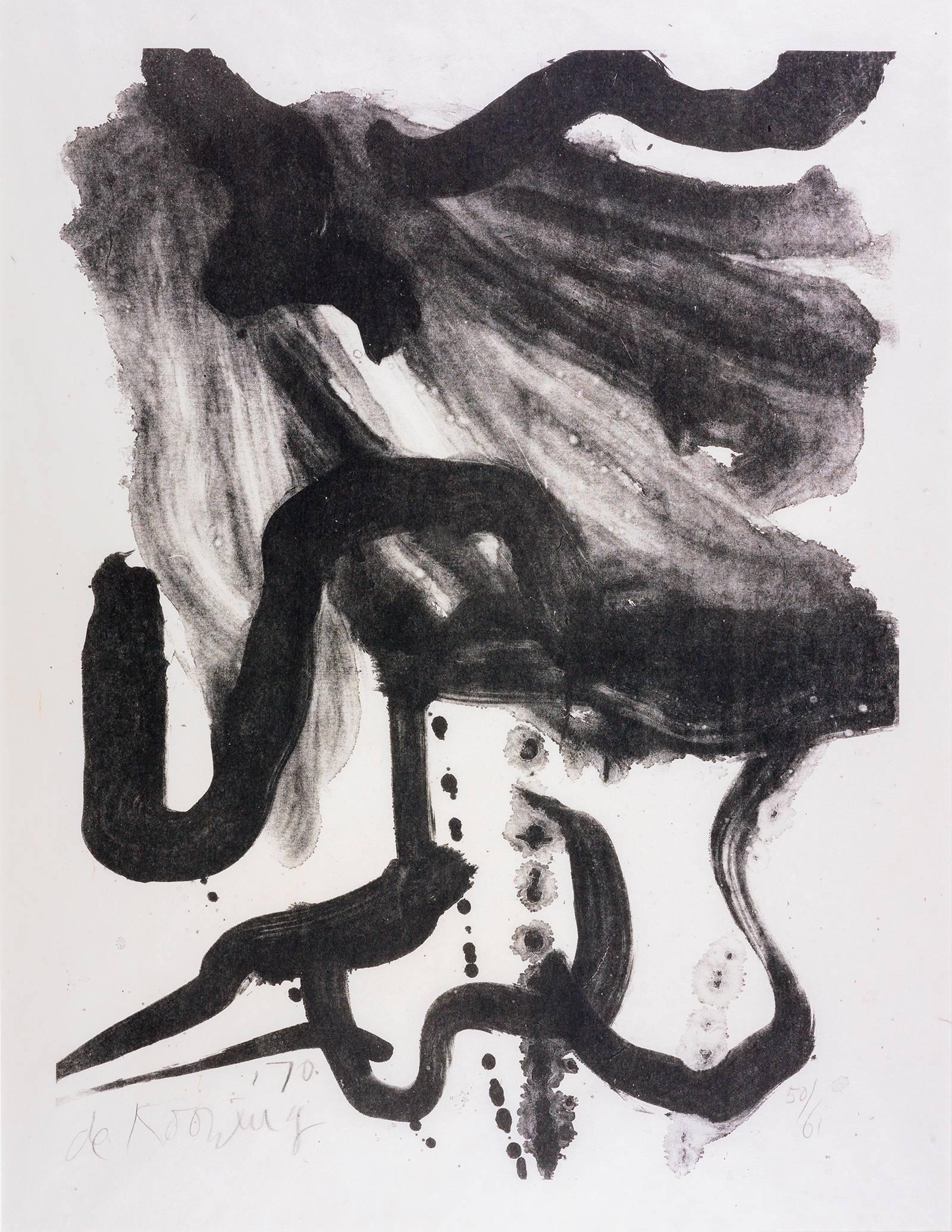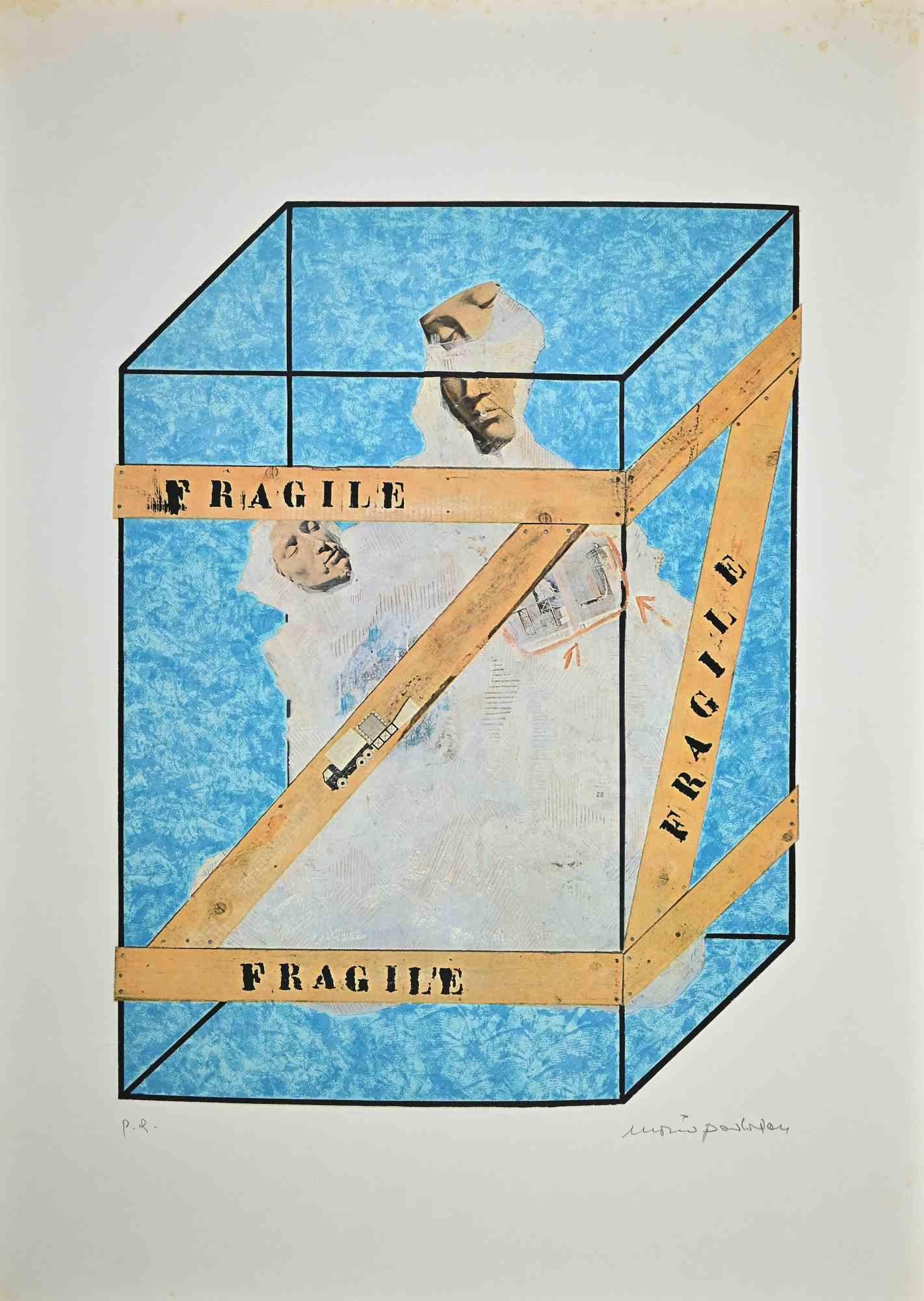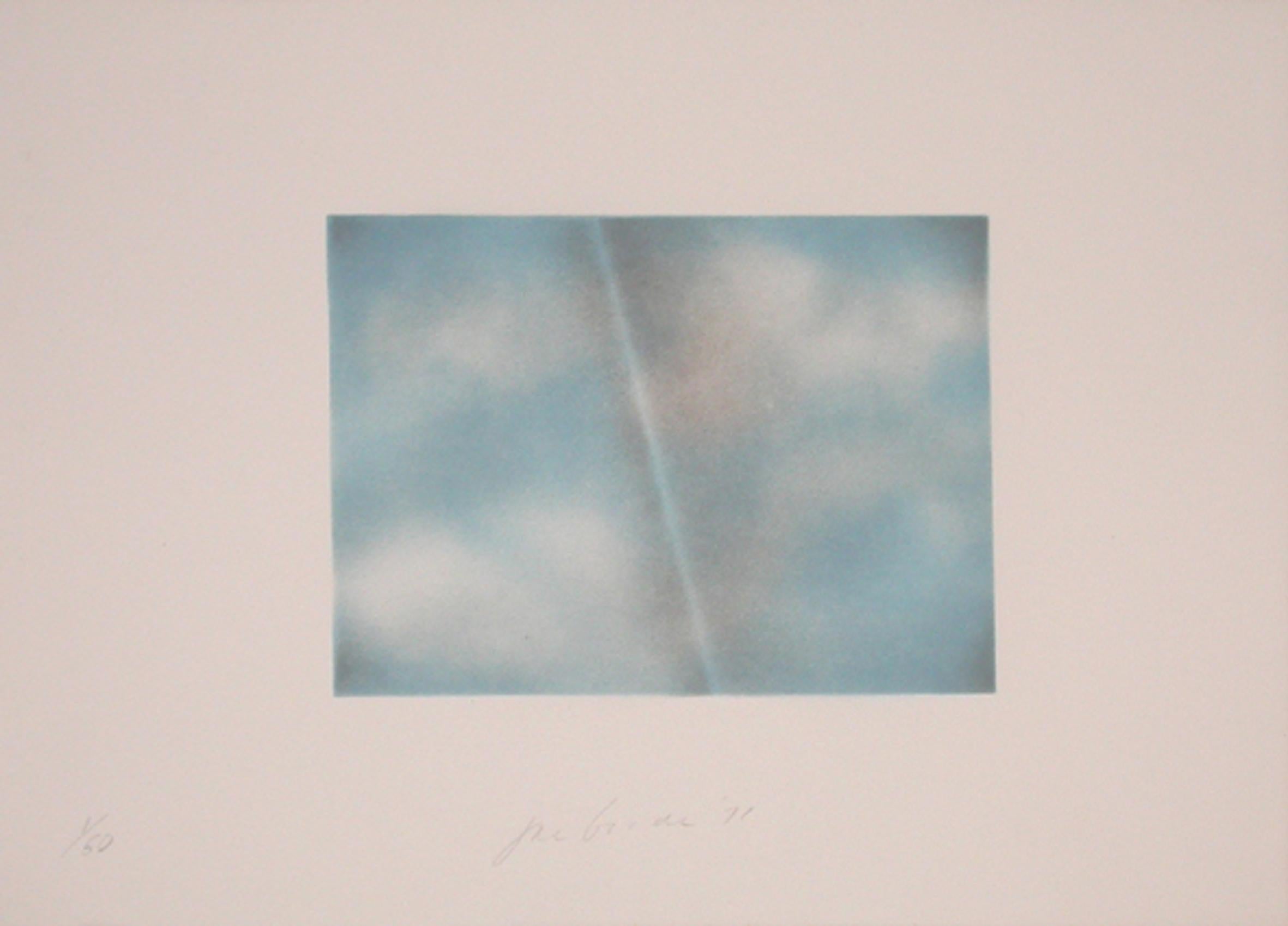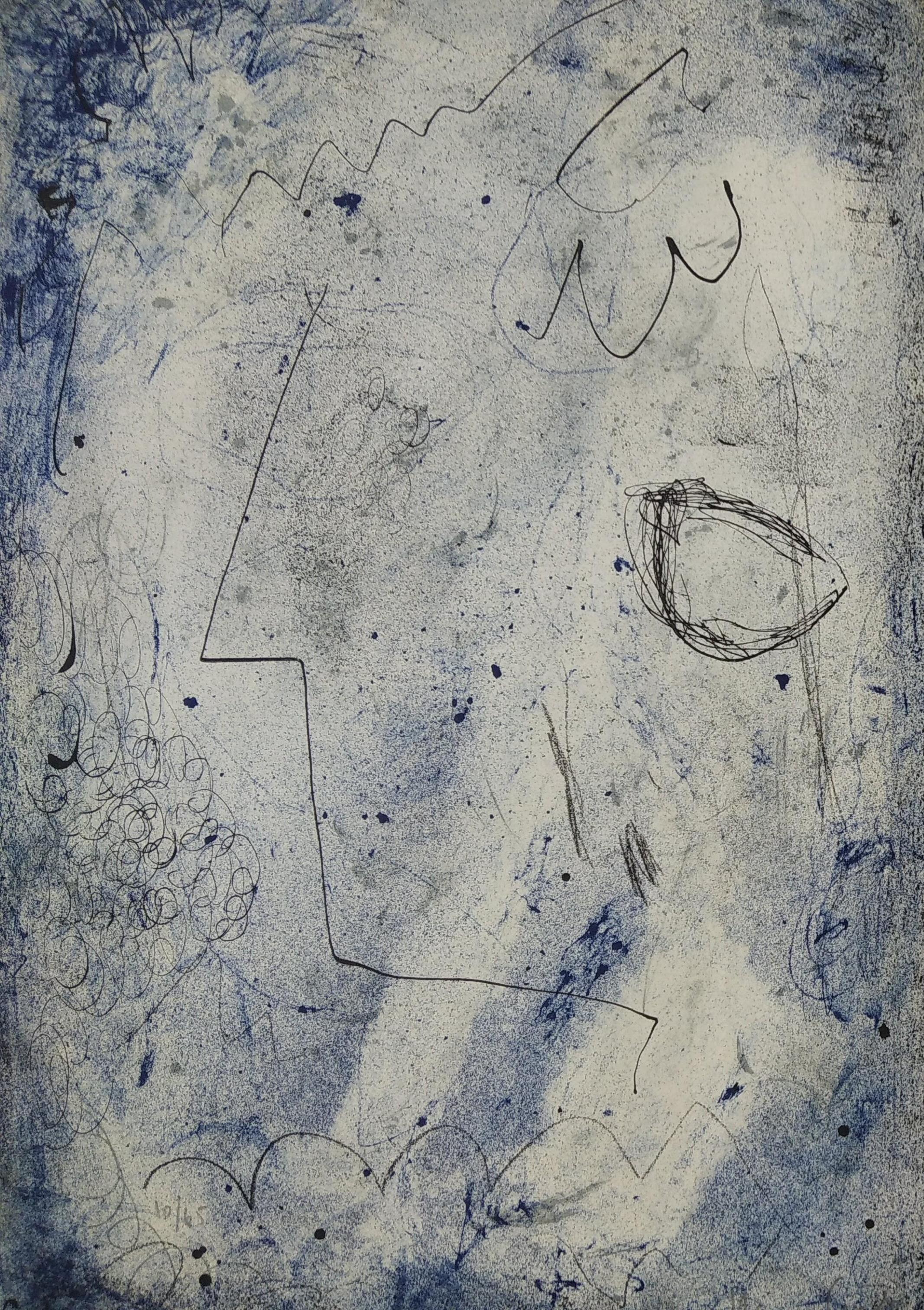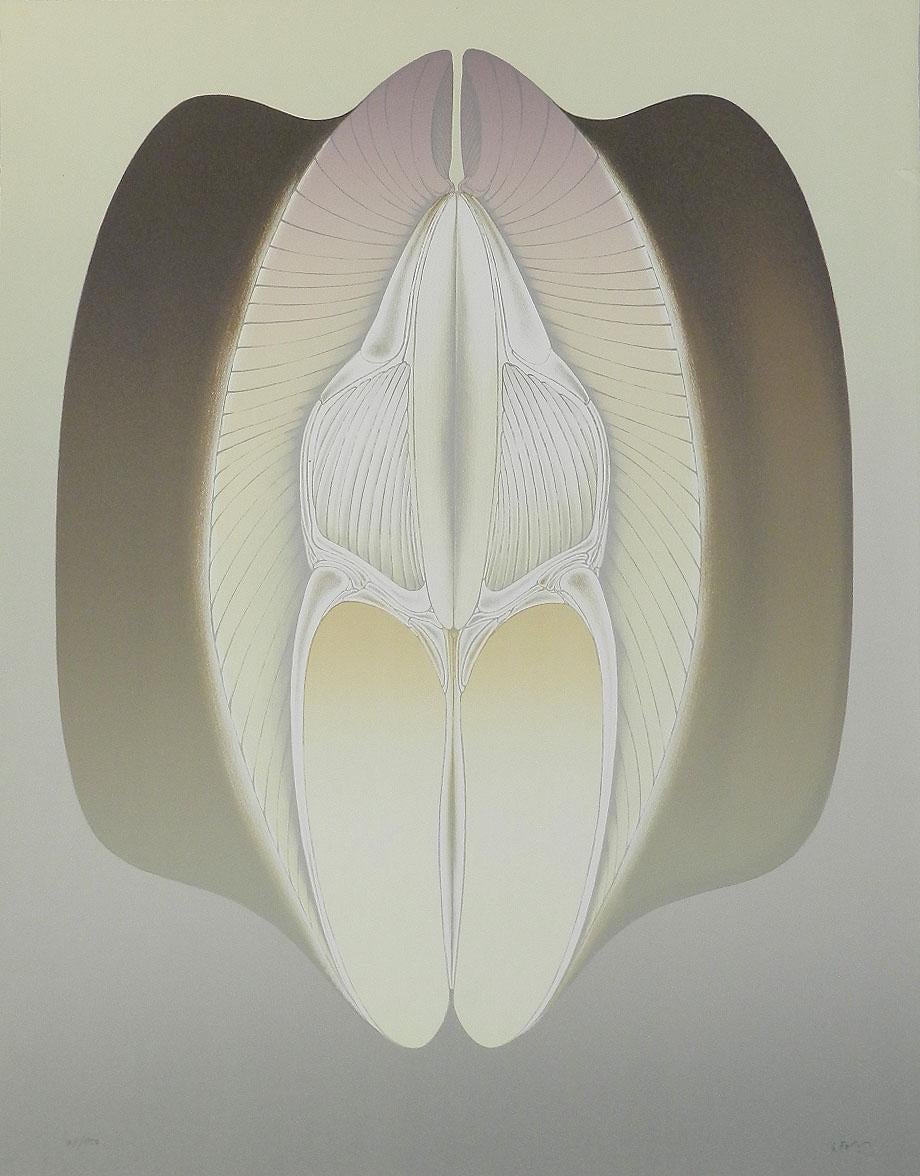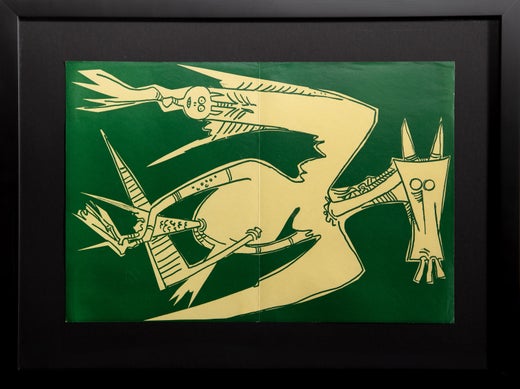Wifredo LamÉLOGE RUPESTRE DE MIRÓ1973
1973
About the Item
- Creator:Wifredo Lam (1902-1982, Cuban)
- Creation Year:1973
- Dimensions:Height: 25.375 in (64.46 cm)Width: 19.5 in (49.53 cm)
- Medium:
- Movement & Style:
- Period:
- Condition:
- Gallery Location:Miami, FL
- Reference Number:1stDibs: LU2519212771432
Wifredo Lam
Wifredo Lam is not only a major artist in Cuba but also the first artist of color in art historiography. He was a member of the movement Niggerism. Lam’s style is the result of his habitual travels, primitive graffiti with clear Cubist influences in a Surrealist mood. By then an artist of international fame, Lam tried to combine Paris, the city of his adoption, with Cuba, his native country and with Albissola Marina in Italy, a town chosen by his family as a peaceful place. Today, some of the artist’s works belong to the Tate gallery's collections in London, some to the Museo Nacional Centro de Arte Reina Sofía in Madrid, some to the Museum of Modern Art in New York and some to the National Gallery of Art in Washington, D.C.
- ShippingRetrieving quote...Ships From: Miami, FL
- Return PolicyA return for this item may be initiated within 14 days of delivery.
- UnitéBy Auguste HerbinLocated in Miami, FLAuguste HERBIN (1882-1960) Unité, c.1959 - Denise Rene Editeur (with blindstamp) Lithograph in colors on heavy paper 25.6 x 19.7 inches / 65 x 50 cm (Plate) Signed lower right and nu...Category
1950s Abstract Geometric Abstract Prints
MaterialsLithograph
- Composition 1969Located in Miami, FLNedo (1926-2001) Composition 1969. Serigraph on paper, signed, dated 1969 and numbered 12/25 lower left, sheet size 48 x 66 cm. After attending the Commercial and Technical Instit...Category
1960s Abstract Geometric Abstract Prints
MaterialsLithograph
- BetelgeuseBy Victor VasarelyLocated in Miami, FLSigned and numbered limited edition screenprint on paper Series Betelgeuse, "Black and White Dots" Artist signature and hand numbered 43 of 150 to bottom. Presented in modern custo...Category
1970s Abstract Geometric Abstract Prints
MaterialsLithograph
- Untitled (Geometric Composition), 1957By Auguste HerbinLocated in Miami, FLUntitled (Geometric Composition), 1957 - After the painting "Orphée" by Auguste Herbin 70 x 50 cm Color serigraph on strong wove paper. Signed, dated and numbered, edition of 100 ...Category
1950s Abstract Geometric Abstract Prints
MaterialsLithograph
- Untitled from El Circulo de Piedra portfolioBy Agustín CárdenasLocated in Miami, FLAgustin Cardenas (1927-2003) Untitled from El Circulo de Piedra, 1971 One of fifteen original lithographs, signed and numbered by the artist, commissioned to illustrate the porfolio...Category
1970s Abstract Geometric Abstract Prints
MaterialsLithograph
- Moon and Spheres, 1970By (after) Alexander CalderLocated in Miami, FLCreator: (after) Alexander Calder (Artist) Signed: Signed in the plate lower right “Moon and Spheres, 1970” Lithograph in Colors on high-gloss card stock paper Sheet Size: approximat...Category
1970s Abstract Abstract Prints
MaterialsLithograph
- Woman with Corset and Long HairBy Willem de KooningLocated in New York, NYPrinter: Hollanders Workshop, New York Publisher: Knoedler, New York Edition size: 61, plus proofs Catalogue Raisonné: Graham 17 Signed, dated, and numbered inpencil, lower marginCategory
1970s Abstract Expressionist Abstract Prints
MaterialsLithograph
- Fragile - Lithograph print by Mario Padovan - 1990sBy Mario PadovanLocated in Roma, ITFragile is an colored serigraph realized by Mario Padovan in the 1990s . Hand-signed in pencil on the lower right. Artist proof. Good conditions. This artwork represents a typica...Category
1970s Abstract Abstract Prints
MaterialsLithograph
- Grey Folded Clouds - II Blue and whiteBy Joe GoodeLocated in London, GBJoe Goode Grey Folded Clouds - II Blue and white (blue paper sky) 1971 Lithograph, Edition of 50 41 x 61 cms (16 x 24 ins)Category
1970s Abstract Abstract Prints
MaterialsLithograph
- UntitledLocated in Barcelona, ESThe painting is being offered with a work and authenticity certificateCategory
1980s Abstract Abstract Prints
MaterialsLithograph
- Violoncelles, 2002 - litograph, 85x61 cm, framedBy Pierre AlechinskyLocated in Nice, FRLithograph, signed lower right, Number: 24/75 Alechinsky was born in Schaerbeek. In 1944 he attended the l'École nationale supérieure d'Architecture et des Arts décoratifs de La Cam...Category
Early 2000s Abstract Abstract Prints
MaterialsLithograph
- Lithograph by Alain Le Foll hand signed limited edition Mid centuryLocated in FRLithograph by Alain Le Foll 1934-1981 Number 71 of 150 examples hand signed by the artist Unframed in very good condition with one very small tear on one edge that doesn't affect the image and won't show when framed In the 1970s he produced designs for Rosenthal Studio Line Porcelain which were typical of his distinctive style Alain Le Foll in his lithographic art gained an international reputation for his highly charged, surrealist imagery This is printed on smooth, archival paper in an edition of one hundred and fifty impressions. It is signed and numbered by Alain Le Foll in pencil A twentieth century French artist, Alain Le Foll studied art techniques at the Beaux-Arts Academy in Caen. He moved to Paris shortly after completing his studies and began exhibiting his original lithographs in international exhibitions in Paris, Dijon, Basel, Dusseldorf, Cologne, Cracovie, Florence, Washington, D. C. and Tokyo. Alain Le Foll began teaching at the Ecole Nationale des Arts Decoratifs, Paris, in 1964 and remained there until his untimely death in 1981. Alain Le Foll was equally famous for his lithographs and for his contributions to the book arts. During the 1960's and 1970's he illustrated many works by the author, Claire Nadaud, including, Moise, Jesus nous donne le pain, Les trios arbres du Samourai and Sinbad the Sailor. In 1965 he received the diploma 'Meilleur Livre Loisirs Jeunes' for his illustrative...Category
1970s Abstract Abstract Prints
MaterialsLithograph
